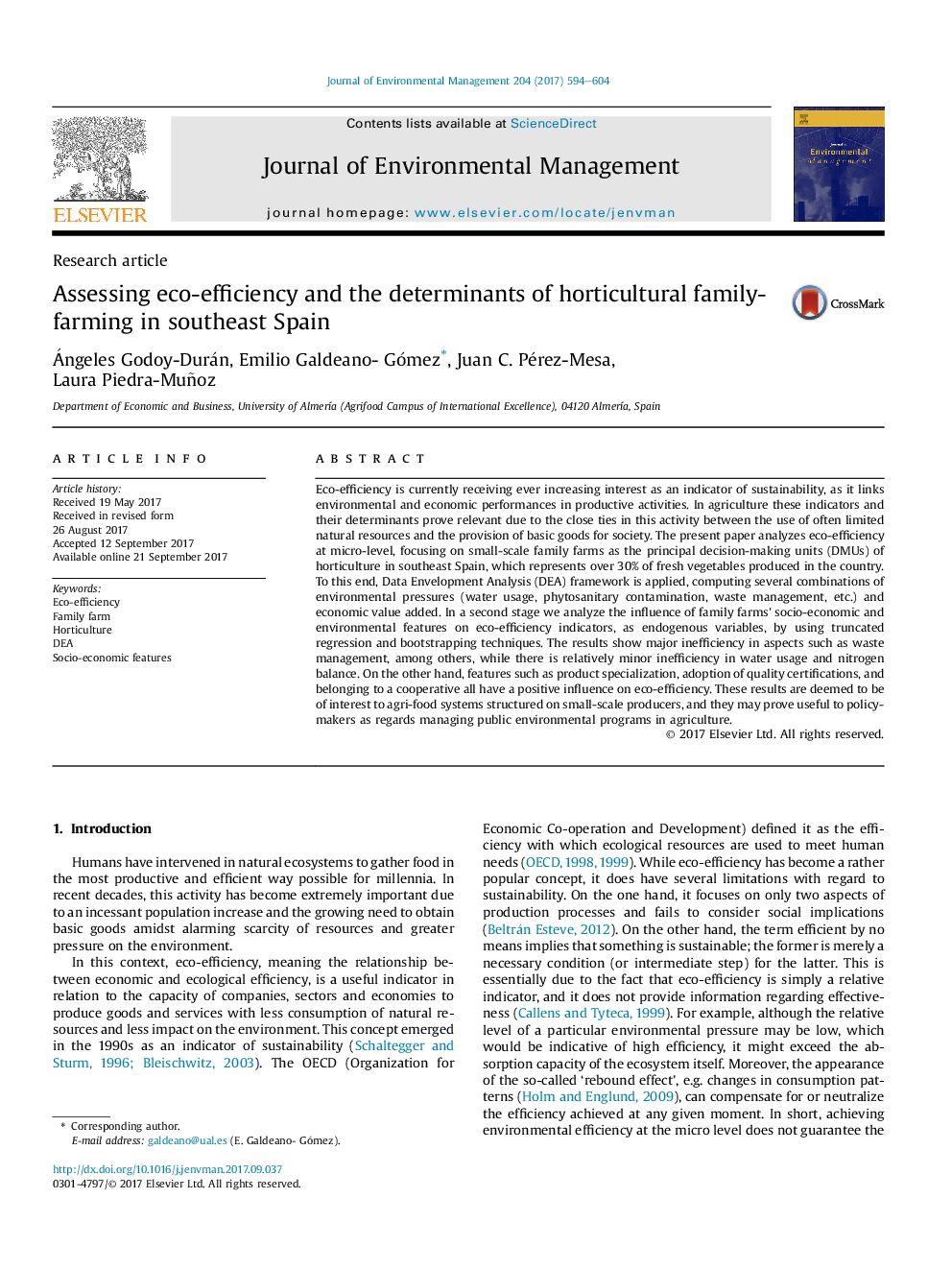| Article ID | Journal | Published Year | Pages | File Type |
|---|---|---|---|---|
| 5116297 | Journal of Environmental Management | 2017 | 11 Pages |
â¢Assessing eco-efficiency and its determinants as indicators of sustainable farming.â¢Family farms as main decision making units on environmental-economic performance.â¢Evaluation is carried out by Data Envelopment Analysis and truncated regressions.â¢Experience, inheritance and cooperative integration of farms can reduce inefficiencies.â¢R&D proactivity, quality controls and environmental innovation improve eco-efficiency.
Eco-efficiency is currently receiving ever increasing interest as an indicator of sustainability, as it links environmental and economic performances in productive activities. In agriculture these indicators and their determinants prove relevant due to the close ties in this activity between the use of often limited natural resources and the provision of basic goods for society. The present paper analyzes eco-efficiency at micro-level, focusing on small-scale family farms as the principal decision-making units (DMUs) of horticulture in southeast Spain, which represents over 30% of fresh vegetables produced in the country. To this end, Data Envelopment Analysis (DEA) framework is applied, computing several combinations of environmental pressures (water usage, phytosanitary contamination, waste management, etc.) and economic value added. In a second stage we analyze the influence of family farms' socio-economic and environmental features on eco-efficiency indicators, as endogenous variables, by using truncated regression and bootstrapping techniques. The results show major inefficiency in aspects such as waste management, among others, while there is relatively minor inefficiency in water usage and nitrogen balance. On the other hand, features such as product specialization, adoption of quality certifications, and belonging to a cooperative all have a positive influence on eco-efficiency. These results are deemed to be of interest to agri-food systems structured on small-scale producers, and they may prove useful to policy-makers as regards managing public environmental programs in agriculture.
